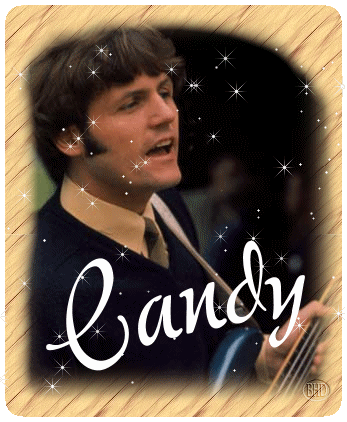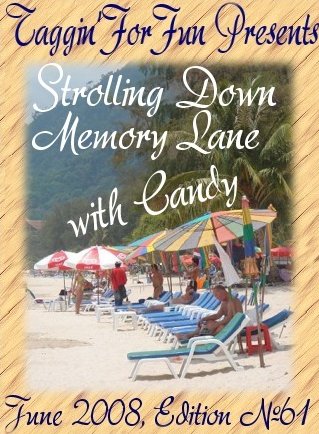
For this stroll you just need your flip flops and some sun screen, we are heading over to visit the Beach Boys....
It just wouldn't be summer without 'em!
During June, we're visiting
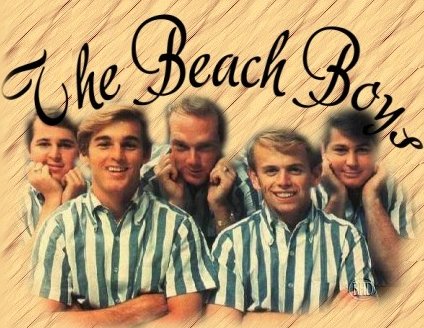
Beginning their career as the most popular surf band in the nation, the Beach Boys finally emerged by 1966 as America's pre-eminent pop group, the only act able to challenge (for a brief time) the overarching success of the Beatles with both mainstream listeners and the critical community. From their 1961 debut with the regional hit "Surfin," the three Wilson brothers -- Brian, Dennis, and Carl -- plus cousin Mike Love and friend Al Jardine constructed the most intricate, gorgeous harmonies ever heard from a pop band. rock band.
The origins of the group lie in Hawthorne, CA, a southern suburb of Los Angeles situated close to the Pacific coast. The three sons of a part-time song plugger and occasionally abusive father, Brian, Dennis, and Carl grew up a just few miles from the ocean -- though only Dennis had any interest in surfing itself. The three often harmonized together as youths, spurred on by Brian's fascination with '50s vocal acts like the Four Freshmen and the Hi-Lo's. Their cousin Mike Love often joined in on the impromptu sessions, and the group gained a fifth with the addition of Brian's high-school football teammate, Al Jardine. His parents helped rent instruments (with Brian on bass, Carl on guitar, Dennis on drums) and studio time to record "Surfin'," a novelty number written by Brian and Mike. The single, initially released in 1961 on Candix and billed to the Pendletones (a musical paraphrase of the popular Pendleton shirt), prompted a little national chart action and gained the renamed Beach Boys a contract with Capitol.
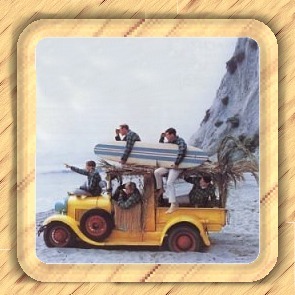
Finally, in mid-1962 the Beach Boys released their major-label debut, Surfin' Safari. The title track, a more accomplished novelty single than its predecessor, hit the Top 20 and helped launch the surf rock craze just beginning to blossom around Southern California (thanks to artists like Dick Dale, Jan & Dean, the Chantays, and dozens more). A similarly themed follow-up, Surfin' U.S.A., hit the Top Ten in early 1963.
By the end of 1963, the Beach Boys had recorded three full LPs, hit the Top Ten as many times, and toured incessantly. Also, Brian began to grow as a producer, best documented on the third Beach Boys LP, Surfer Girl. Though surf songs still dominated the album, "Catch a Wave," the title track, and especially "In My Room" presented a giant leap in songwriting, production, and group harmony -- especially astonishing considering the band had been recording for barely two years. Brian's intense scrutiny of Phil Spector's famous Wall of Sound productions was paying quick dividends and revealed his intuitive, unerring depths of musical knowledge.
The following year, "I Get Around" became the first number one hit for the Beach Boys. Riding a crest of popularity, the late 1964 LP Beach Boys Concert spent four weeks at the top of the album charts, just one of five Beach Boys LPs simultaneously on the charts. The group also undertook promotional tours of Europe, but the pressures and time-constraints proved too much for Brian. At the end of the year, he decided to quit the touring band and concentrate on studio productions. (Glen Campbell toured with the group briefly, then friend and colleague Bruce Johnston became Brian's permanent replacement.)
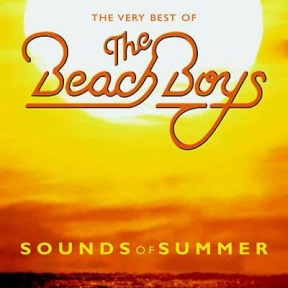
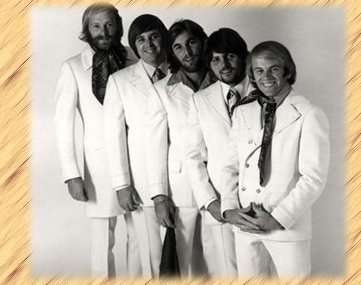
As the Beatles were ushering in the psychedelic age, the Beach Boys stalled with the all-important teen crowd, who quickly began to see the group as conservative, establishment throwbacks. The perfect chance to stem the tide, a headlining spot at the pioneering Monterey Pop Festival in summer 1967, was squandered. Though the Beach Boys regrouped quickly -- the back-to-basics Wild Honey LP appeared before the end of 1967 -- their hopes of becoming the world's pre-eminent pop group with both hippies and critics had fizzled in a matter of months.
Perhaps a bit gun-shy, the Beach Boys essentially retired from recording during the mid-'70s. Instead, the band concentrated on grooming their live act, which quickly grew to become an incredible experience. It was a good move, considering the Beach Boys could lay claim to more hits than any other '60s rock act on the road. The Beach Boys in Concert, their third live album in total, appeared in 1973.
Then, in mid-1974, Capitol Records went to the vaults and issued a repackaged hits collection, Endless Summer. Both band and label watched, dumbfounded, as the double LP hit number one, spent almost three years on the charts, and went gold. Endless Summer capitalized on a growing fascination with oldies rock that had made Sha Na Na, American Graffiti, and Happy Days big hits. Rolling Stone, never the most friendly magazine to the group, named the Beach Boys its Band of the Year at the end of the year. Another collection, Spirit of America, hit the Top Ten in 1974, and the Beach Boys were hustled into the studio to begin new recordings.
The Beach Boys began splintering by the end of the decade, with financial mismanagement by Mike Love's brothers Stan and Steve fostering tension between him and the Wilsons. By 1980, both Dennis and Carl had left the Beach Boys for solo careers. (Dennis had already released his first album, Pacific Ocean Blue, in 1977, and Carl released his eponymous debut in 1981.) Brian was removed from the group in 1982 after his weight ballooned to over 300 pounds, though the tragic drowning death of Dennis in 1983 helped bring the group back together. In 1985, the Beach Boys released a self-titled album which returned them to the Top 40 with "Getcha Back." It would be the last proper Beach Boys album of the '80s, however.
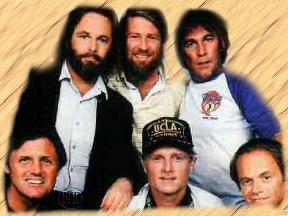
Despite the many quarrels, the Beach Boys kept touring during the early '90s, and Mike and Brian actually began writing songs together in 1995. Instead of a new album though, the Beach Boys returned with Stars and Stripes, Vol. 1, a collection of remade hits with country stars singing lead and the group adding backing vocals. Also, a Brian Wilson documentary titled "I Just Wasn't Made for These Times" aired on the Disney Channel, with an accompanying soundtrack featuring renditions of Beach Boys classics by Brian himself. Just as the band appeared to be pulling together for a proper studio album though, Carl died of cancer in 1998.
By early 1999, no less than three Beach Boys-connected units were touring the country -- a Brian Wilson solo tour, the "official" Beach Boys led by Mike Love, and the "Beach Boys Family" led by Al Jardine. In 2000, Capitol instituted a long-promised reissue campaign, focusing on the group's long out of print '70s LPs.
No matter what girl you were, we were all mentioned in "California Girls"...so to all the "Girls" out there, and all of our "Beach Boys".....
Have a wonderful Summer!
